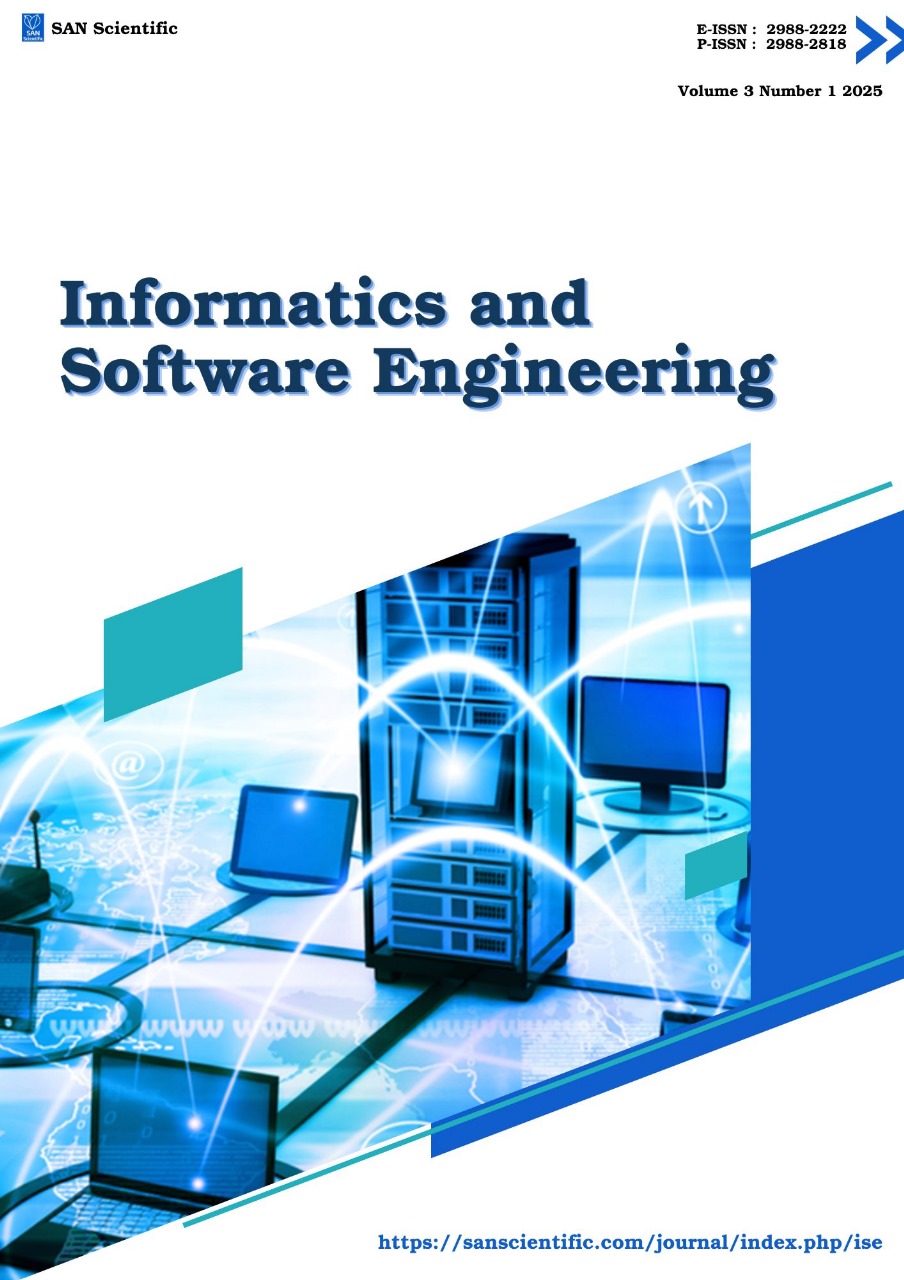The Perception of Senior High School Students Towards E-Learning in Bolgatanga Municipality, Ghana
DOI:
https://doi.org/10.58777/ise.v3i1.396Keywords:
E-learning, Perceived Usefulness , Perceived Ease of UseAbstract
Electronic learning (e-learning) is a comparatively new phenomenon in Ghana and students are grappling with the idea of adopting e-learning. The Technology Acceptance Model (TAM) was used in this study to investigate the perception of senior high school students toward e-learning. The study employed the quantitative research approach. The probability sampling method was used to select a total of three hundred and sixty (360) students from a sample frame to constitute the sample size for the study. A closed-ended structured questionnaire was used to gather data on students' perceived usefulness of e-learning and students' perceived ease of use of e-learning which was then analyzed using SPSS. The results revealed student’s strong agreement that, attitude to using an e-learning system is based on student’s perception of ease of use (POEU). Similarly, the study showed that students strongly agreed that students’ perception of usefulness (PU) of e-learning systems forecasts user attitudes toward using an e-learning system.
References
Adeniyi, I. S., Al Hamad, N. M., Adewusi, O. E., Unachukwu, C. C., Osawaru, B., Onyebuchi, C. N., ... & David, I. O. (2024). E-learning platforms in higher education: A comparative review of the USA and Africa. International Journal of Science and Research Archive, 11(1), 1686-1697.
Akhter, S., Javed, M. K., Shah, S. Q., & Javaid, A. (2021). Highlighting the advantages and disadvantages of E-learning. Psychology and Education, 58(5), 1607-1614.
Al-Adwan, A., Al-Adwan, A., & Smedley, J. (2013). Exploring students’ acceptance of e-learning using the Technology Acceptance Model in Jordanian universities. International Journal of Education and Development using ICT, 9(2).
Arkorful, V., & Abaidoo, N. (2015). The role of e-learning, advantages, and disadvantages of its adoption in higher education. International journal of instructional technology and distance learning, 12(1), 29-42.
Das, S. K., & Gupta, H. (2021). E-Learning in India- A Study of Regional Disparities. International Journal for Research in Applied Science & Engineering Technology, 9(8).
Davis, F. D. (1989). Perceived usefulness, perceived ease of use, and user acceptance of information technology. MIS Quarterly, 319-340.
Goyal, S. (2012). Connections: an introduction to the economics of networks. Princeton University Press.
Izah, S. C., Sylva, L., & Hait, M. (2023). Cronbach's Alpha: A Cornerstone in Ensuring Reliability and Validity in Environmental Health Assessment. ES Energy & Environment, 23, 1057.
Mamattah, R. S. (2016). Students’ Perceptions of E-Learning. Mas Mahajan, M. V. (2023). A study of students’ perception of e-learning. Indian Journal of Clinical Anatomy and Physiology, 5(4), 501-507. , M. (2007). Technology acceptance model and e-learning. Technology, 21(24), 81
Oye, N. D., Salleh, M., & Iahad, N. A. (2010). Holistic E-learning in Nigerian higher education institutions. Journal of Computing, 2(11), 20-26.
Pande, D., Wadhai, V. M., & Thakare, V. M. (2016). E-learning system and higher education. International Journal of Computer Science and Mobile Computing, 5(2), 274-280.
Sakkir, G., Dollah, S., & Ahmad, J. (2020). Students‟ perceptions toward using YouTube in EFL classrooms. Journal of Applied Science, Engineering, Technology, and Education, 2(1).
Samsuri, N. N., Nadzri, F. A., & Rom, K. B. M. (2014). A Study on the Student's Perspective on the Effectiveness of Using E-learning. Procedia-Social and Behavioral Sciences, 123, 139-144.
Stone, S., & Logan, A. (2018). Exploring students’ use of the social networking site WhatsApp to foster connectedness in the online learning experience. Irish Journal of Technology Enhanced Learning Ireland, 3(1), 42-55.
Vasantha, S. Meenakshi Thanji. Stakeholder Perception on Online Capabilities of Educational Institutions.
Downloads
Published
How to Cite
Issue
Section
Copyright (c) 2025 Jesse Atuah, Domebale Joseph, David Laar Sanka, Cletus Azaabi, Solomon Atebi

This work is licensed under a CC Attribution-ShareAlike 4.0
 Views: 55
|
Views: 55
|
 Downloaded: 37
Downloaded: 37











